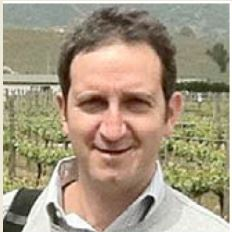Integrated Membrane Systems and Processes
A special issue of Membranes (ISSN 2077-0375). This special issue belongs to the section "Membrane Processing and Engineering".
Deadline for manuscript submissions: closed (31 July 2020) | Viewed by 10832
Special Issue Editors
Interests: membranes and integrated membrane operations in agro-food production; pressure-driven membrane operations; membrane distillation and osmotic distillation; membrane fouling; food processing; food science and technology; bioactive compounds; phenolic compounds; proteins; peptides; agri-food by-products valorization; circular economy
Special Issues, Collections and Topics in MDPI journals
Interests: polymeric membranes; sustainable membrane preparation; bio-polymeric membranes; flat membranes; hollow-fibers; nano fibers; membrane preparation; membrane characterization; pervaporation; antifouling coatings; self-cleaning membranes; ultra-micro filtration
Special Issues, Collections and Topics in MDPI journals
Special Issue Information
Dear Colleagues,
The combination of membrane unit operations in the overall purification or production scheme of industrial processes is an emerging tool for improving product quality as well as process capacity and selectivity. The specific feature of hybrid processes is the synergy resulting from this integration, which enhances process effectiveness.
Pressure-driven membrane processes have been often associated with a cascade configuration in purification processes. New perspectives arise from the combination of these processes with innovative membrane techniques such as membrane distillation (MD), membrane emulsification (ME), membrane bioreactor (MBr), pervaporation (PV), and molecular imprinted membranes. Such an approach allows one to redesign the traditional schemes of industrial production in agreement with process intensification and zero-discharge strategies.
This Special Issue aims to provide some relevant examples of integrated membrane operations in different fields, including water desalination, food industry, wastewater treatment, biotechnology, and pharmaceutics. It welcomes both original contributions and reviews on the present state of the research and advancement of hybrid membrane systems in these fields, highlighting the advantages over conventional technologies in terms of product quality, plant compactness, rationalization and optimization of productive cycles, and reduction of environmental impact and energy consumption.
Dr. Alfredo Cassano
Dr. Alberto Figoli
Guest Editors
Manuscript Submission Information
Manuscripts should be submitted online at www.mdpi.com by registering and logging in to this website. Once you are registered, click here to go to the submission form. Manuscripts can be submitted until the deadline. All submissions that pass pre-check are peer-reviewed. Accepted papers will be published continuously in the journal (as soon as accepted) and will be listed together on the special issue website. Research articles, review articles as well as short communications are invited. For planned papers, a title and short abstract (about 100 words) can be sent to the Editorial Office for announcement on this website.
Submitted manuscripts should not have been published previously, nor be under consideration for publication elsewhere (except conference proceedings papers). All manuscripts are thoroughly refereed through a single-blind peer-review process. A guide for authors and other relevant information for submission of manuscripts is available on the Instructions for Authors page. Membranes is an international peer-reviewed open access monthly journal published by MDPI.
Please visit the Instructions for Authors page before submitting a manuscript. The Article Processing Charge (APC) for publication in this open access journal is 2700 CHF (Swiss Francs). Submitted papers should be well formatted and use good English. Authors may use MDPI's English editing service prior to publication or during author revisions.
Keywords
- Integrated membrane operations
- Desalination
- Agro-food productions
- Wastewater treatments
- Pressure-driven membrane operations
- Membrane contactors
- Process intensification
- Zero discharge







